 |
|
| Issue #68 • March/April, 2001 |
As an active member of the worldwide fraternity of “Java Junkies,” I feel it is time that I stand up and be recognized for my contribution to the second most valuable item of international trade, the first being petroleum. With my three-cup-a-day habit, I consume about 50 gallons of coffee a year. Eighteen coffee trees, located in several different coffee producing countries, are carefully nurtured to produce the 27 pounds of coffee beans required to satisfy my needs.
In an effort to keep this venerable organization of coffee lovers supplied with enough beans to meet our 2.25 billion-cup-a-day habit, each year the world’s coffee growers produce about 6 million tons of green coffee beans and pack them into 100 million 132-pound bags and ship them to coffee roasters around the globe. So, as you read this column, be aware that you are in the presence of one who, in a big way, is an influential figure in the world economy. But, then, of course, if you’re a coffee lover, so are you.
Before we discuss the important details of “King Coffee,” let me share with you some coffee legends. My mom, who was also a respected member of this world fraternity, would, in a talkative moment, share these stories with me at the breakfast table. She always referred to her coffee as “my cup of java.” So my daughter Sarah, who loved listening to these coffee anecdotes, nicknamed them “Nanna V’s Java Jive.” The following are a couple of my mom’s favorites.
Coffee legends
She loved to reminisce about one Islamic legend that tells of the day, on the hillsides near South Yemen in Arabia, when a young Ethiopian goatherd named Kaldi watched in wonder as his goats began acting in a very strange and lively manner. Even the old billy goats began kicking up their heels with an exuberance that the young nannies found quite appealing. Upon a closer observation Kaldi noticed some shrubs with firm glossy leaves and red cherry-like berries which the goats were nibbling on. After eating a few of the berries himself, Kaldi suddenly felt alert and full of energy. He also began kicking up his heels and cavorting across the hillside. At the end of the day he reported this experience to a Muslim monk at the nearby monastery. The monk went back to the hillside the following day and cut a branch from one of the bushes that still contained some berries and brought it back to the monastery. The monk tasted the berries but found them to have a very unpleasant taste. So, he roasted them in the fire, hoping to improve their flavor. After roasting, he crushed them with a stone and boiled them in water to make a thick puree-like drink. Almost immediately after tasting the drink his brain became as active as he remembered it to be in his youth. It seemed, to him, that his already considerable intellectual powers increased even further. He was able to stay awake all night without feeling tired the next morning. As the other monks wearily dragged themselves, mumbling and tired as usual, into the morning prayer session, he shared some of the potion with each of them. Much to his delight the same miracle happened to them all. News of this wondrous berry drink quickly spread throughout all the monasteries.
Another Islamic legend relates how the Angel Gabriel appeared to Mohammed in a dream. Showing the prophet a coffee berry, the angel told him how it could both heal and stimulate the prayers of his followers.
An Ethiopian beginning
The first practical use of coffee was discovered prior to 1000 A.D. by nomadic mountain warriors of the Galla tribe in Ethiopia. They mixed the berries with animal fat and rolled them into little balls to be consumed during their long journeys. As unpalatable as this sounds, it was a good move from a nutritional viewpoint. The whole berries of the coffee plant are a source of protein, a benefit that is not found in the beverage obtained from the dried roasted bean. The Galla, by the way, were noted for being among the most ferocious warriors in Ethiopia.
Some modern Ethiopian cookbooks have a recipe for Bunna Quela, a mixture of crushed, fire-roasted coffee beans, salt, and butter spiced with onion, fenugreek, white cumin, basil, cardamom, oregano, and turmeric. The result is sort of like a spread for crackers.
It wasn’t until the about the 12th century that coffee was routinely consumed as a beverage. Its restorative powers were so well documented through the Islamic world that by the 15th century coffeehouses replaced neighborhood mosques as favored meeting places.
Coffee goes to Europe
By the 16th century, European travelers were enthusiastically describing the drink in their travel journals, but the Arabs, being astute businessmen, maintained a tight control over their profitable trade monopoly. The secrets behind its cultivation were closely guarded. Foreigners were not allowed near coffee farms, and only beans that were subjected to heat to destroy their germinating potential could be exported. These protective barriers began to erode as the number of European travelers to Arab lands increased along with the steady integration and expansion of the Ottoman Empire. By the early 17th century germinable seeds were smuggled to India and live coffee plants were plundered by Dutch spies and shipped to their colonies in Java for cultivation.
The secret was out. Coffee was now in enough different hands to ensure its cultivation by dozens of countries in just a few years. Venetian traders introduced coffee to Europe early in the 17th century. In England, coffeehouses rapidly began replacing taverns as social, political, and commercial hangouts. As early as 1715 there were over 2000 coffeehouses in London alone.
Throughout Europe coffeehouses evolved as prototypes for many new social clubs and other institutions. England’s Royal Society, one of Europe’s first scientific societies, whose membership would soon include luminaries like Isaac Newton and Edmond Halley (for whom Halley’s comet is named) is believed to have started in the island’s first coffeehouse, located in the university town of Oxford.
A coffeehouse also was the stage for the evolution of Lloyd’s of London. The insurance company’s founder, Edward Lloyd, posted in his coffeehouse a list giving accurate information about what ships were carrying, their schedules, and their insurance needs. This information attracted many underwriters to the coffeehouse to sell shipping insurance. A giant was being conceived while its principals were savoring good coffee.
Throughout Europe and the rest of the world, coffee entered into use in many ways: as a medicine, a fashion, a stimulating drug, a temperance beverage, and an exotic drink. Its pharmacological qualities were perceived to have the power to cure everything from drunkenness and opium addiction to plague.
Unlike many other beverages, coffee, wherever it was introduced, persisted regardless of cultural norms and attitudes that challenged its presence. Even in Prussia, where coffee initially met resistance in the form of manifestoes and laws banning its consumption, the government found it easier to monopolize its distribution while making a substantial profit than to ban it. During this divided period, when Germany struggled with love and antipathy for coffee, Johann Sabastian Bach, being an ardent coffee lover, wrote his famous secular, Coffee Cantata, in 1732. Coffee survived an initial wrestling match with Germany’s king of beverages, beer, and over the following decades survived heavy taxation, periodic prohibition, and general suppression from high levels to eventually win the battle. Today, Germany is the largest coffee consumer in Europe.
History’s major producers
The history of coffee monopolies is long and varied with first one nation and then another controlling world coffee markets.
The Dutch introduced coffee to the America’s in 1718. Through a chain of thefts and subterfuges, with the French as victims, the Dutch successfully planted coffee on territory in South America that they had acquired from the British in trade for their North American possessions including present day New York. The French, however, were the world’s largest exporter of coffee until the late 18th century. This was made possible by the importation of thousands of African slaves to maintain coffee plantations on French Haiti. The Haitian slave revolt in 1793 brought this dominance to an end and paved the way for the modest entrance of Brazil into the world coffee market.
Ceylon, today called Sri Lanka, which was under British influence at the time, briefly became the world’s top coffee producer and by 1869 had converted 176,000 acres of rain forest into coffee producing land. Then, in that year, like a slow moving avalanche, a lethal fungal disease named coffee rust got a firm foothold in the island’s coffee crops. As the 1890’s progressed coffee rust decimated all of Ceylon’s coffee estates. The disease also spread to the estates in India, Java, Sumatra, and Malaysia with the same effect. In the years that followed this disaster the English decided to replant their coffee plantations with tea. Supported by the “cup of cheers” marketing campaign instituted by the British East India Company, tea finally supplanted coffee as the national drink of England. However, to this day, coffee continues to be a popular drink with the British.
But, in the wake of Ceylon’s coffee rust problem, Brazil, once a minor player in the world’s coffee markets, emerged to become the world’s preeminent coffee power, and continues to be so to this day. Following Brazil in importance are Colombia, Indonesia, Mexico, Ethiopia, and Guatemala, in that order.
Coffee economics 101
Coffee, on the surface, would appear to be a simple commodity. It starts as a handsome, shade-loving, tropical bush that produces juicy red cranberry-like cherries. In a perfect environment these berries are selectively picked, dried, roasted, ground, and infused into that wonderful smelling cup of “joe” that helps many of us start the day with an energetic smile. But the trip that coffee takes to your cup is very turbulent and unpredictable and fraught with economic infighting, political intrigue, and power plays.
The economics of the international coffee trade is a complex issue that involves the world’s richest countries as consumers and poorest countries as producers. Every year cooperating and often competing interests engage in a push-and-pull struggle for power and billions of dollars in revenue. Today, major consuming European and Asian countries along with the United States have allied with the transnational food conglomerates and the largest producing countries like Brazil and Colombia to create and maintain a desired value for green (i.e., dried and unroasted) coffee beans by manipulating the world supply. Over the years some of these countries have formed coffee lobbying organizations with the support of corporate giants like General Foods in the United States and Nestlé Corporation in Europe. These organizations have worked overtime, with mixed results, to cartelize the world’s coffee supply.
Brazilian coffee producers have been represented by a government controlled organization called the Instituto do Café (IBC). This organization was the first to successfully control world coffee prices by withholding millions of pounds of coffee from the market. This manipulation of supply, to increase value, was dubbed the “valorization of coffee.” Under the direction of the IBC, Brazil began withholding coffee from the market, destroying millions of pounds by fire, or even dumping it into the ocean when necessary. Between 1930 and 1944 the IBC orchestrated the destruction of 78 million bags of coffee.
Colombia has the Colombian Coffee Federation (FNC), an aggressive organization representing the country’s coffee growers by promoting unrestrained expansionist trade in Colombian coffee. It is this organization that launched the successful marketing campaign using Juan Valdez and his mule to promote Colombian coffee. Rustic Juan ranks along with the Marlboro man in consumer awareness. In the United States, the National Coffee Association has represented this country’s roasters and importers on the global coffee market since 1911.
Brazil, Colombia, and the United States have, through their coffee organizations, negotiated several trade agreements that were intended to stabilize the world coffee market. The Inter-American Coffee Agreement (IACA) negotiated during World War II and the International Coffee Agreement (ICA) born during the Cold War are classic examples of the geopolitical dance that has used coffee as a central theme. When both of these trade agreements were conceived, the United States was the world’s largest coffee consumer and Brazil and Colombia were, and still are, the largest producers. The United States government, with both agreements, looked to stabilize governments in Latin American countries, to keep them as friends during World War II, and to prevent Communism from gaining a foothold during the Cold War.
Of course, other coffee producers around the world have not been passive observers to these attempts at market domination. Over the years African and Central American producers have taken advantage of reduced coffee production from South America by increasing their own production to take advantage of high market prices. Also, during the 1950s, European countries with colonies in areas that produced a cheaper, low-grade coffee bean started introducing their coffee to the European and U.S. markets. Since growers in these areas had no obligation to these various agreements between the United States, Brazil, and Colombia, they became free riders and were able to bring large amounts of beans to the market. This threatened to reverse the coffee market and send prices plummeting.
In 1989 the ICA collapsed and wholesale coffee prices fell to historic lows for five years. For the first time in many years the free market took over world coffee trading. Unfortunately, at the retail level, prices for roasted coffee, remained high until the early 1990s, even as green coffee prices fell because the transnational corporations, in an effort to circumvent free market prices, exercised their monopolistic powers and kept retail prices artificially high. But these high prices and increased competition from caffeinated soft drinks has caused coffee sales in this country to stagnate since 1962.
During the late 1980s and into the 1990s, specialty coffees gained a foothold in the European and American markets. In 1994, as a result of multiple frosts in Brazil, the slump in wholesale coffee prices began to moderate as production fell. The resulting rise in prices brought newcomers into the arena. The booming Asian economy convinced countries like Vietnam and Laos that growing coffee was the way to go. Continued stagnation of U.S. coffee consumption, increased competition from the specialty coffee market, and a new wave of coffee producing countries has forced the largest coffee producers, Brazil and Colombia, to focus more attention on the growing demand for their product in Europe, Japan, and China.
Big business
The most consistent winners in the coffee commodity game are the big food conglomerates. The three largest are Nestlé, Proctor and Gamble, and Philip Morris. Nestlé is the world’s largest food conglomerate. It sells Nescafé, the largest coffee brand in the world and the first commercially available instant coffee, Hills Brothers, MJB, and Tasters Choice. Proctor and Gamble, the world’s largest household products company, owns Folgers, Millstone, and High Point coffee brands. Philip Morris owns Maxim, Maxwell House, Brim, Gavalia (the largest mail order coffee company), Sanka, General Foods International Coffees, and Chase & Sanborn.
If you ever wondered why the canned and instant coffee that you buy in the supermarket is often overpriced and bad tasting, consider this: The most popular coffee brand in this country, Folgers, is owned by a soap manufacturer, (Proctor and Gamble) while its closest competitor, Maxwell House, is a cereal manufacturer that is owned by a cigarette company (Philip Morris).
Fortunately for American coffee drinkers, the art of fine coffee making has been kept alive by a few small roasters, like Peet’s in Berkeley, California, Coffee Connection in Cambridge, Massachusetts, and Starbucks in Seattle, Washington. Starbucks, by the way, has about 2000 stores around the world, with more units opening on almost a daily basis. These companies, and others like them, have opened our eyes, noses, and taste buds to the reality that coffee can taste good to the last drop.
I started buying fresh roasted coffee and green coffee beans to roast at home from Coffee Connection about 20 years ago. Recently, I have been sampling Starbucks’ wide variety of coffee beans. You won’t find any “buy one, get one free” sales at these specialty roasters stores, but bargains on 40-year-old single malt scotch and fine wines are also rare.
We have discussed a very brief history of coffee and reviewed an even shorter anatomy of the coffee industry. I would explore both of these in more detail, but I must save space to talk a little about the star of this ongoing drama, the coffee bean itself. After all, what really matters to most of us java junkies is the quality of the brew. Like all edibles, knowing what it is, how to buy it, store it, and finally, how to prepare it, are the keys to enjoyment.
Coffee cultivation and processing
Coffee is grown in about 80 tropical countries. By the mid-1990s 26 million acres were being cultivated worldwide to grow coffee. The coffee plant is a woody shrub that can grow to a height of 30 feet. Like an apple tree, each cultivated coffee plant is pruned to about eight feet to make harvesting easy.
Coffee grows best in areas that have a lot of sunshine, moderate rainfall, altitudes from sea level to 6000 feet, no frost, and a temperature that ranges between 60 and 70 degrees Fahrenheit. After pollination, the tree produces a fruit that resembles a cranberry in color, size, and shape. This “cherry” contains a sweet pulp inside of which are two flat-sided seeds covered by an opaque covering called a silverskin. Each tree produces about 2000 coffee cherries a year. This is somewhat over a pound of roasted coffee beans. There are at least 20 species within the genus caffea, but only two of them account for most of the coffee produced worldwide. Caffea arabica is the coffee discovered by the goatherd Kaldi. It is native to the highlands of Ethiopia. Caffea canephora var robusta, or robusta for short, is native to the hot, wet lowlands of West Africa. Robusta is a newcomer to the cultivated coffee industry. It was unknown until its discovery near the end of the 19th century.
Robustas produce a smaller bean than the arabicas, have a harsher flavor, are accented by a noticeable bitterness, and have twice the caffeine of caffea arabica. It is used primarily in the production of instant coffee, but it is also blended into mass produced canned coffees found in supermarkets and other retail food stores. Arabicas produce better tasting coffee but are more susceptible to poor soil, disease, and frost—characteristics that make them more difficult to grow and consequently more expensive.
How coffee beans are picked, processed, roasted, packaged, distributed, ground, and brewed also contribute to the quality and purchase price of the coffee in your cup. By processing, I am referring to how the beans are separated from the pulp and the silverskin in preparation for drying. There are two methods of processing.
Dry and wet methods
The dry method is the oldest, most natural, and the cheapest. The fruit can be allowed to dry on the tree and the ripe dried berries are hand picked. On the other hand, some producing countries practice an inferior harvesting method which involves stripping of all the berries, ripe and unripe, from the tree. The fresh berries are then spread out to dry in the sun. After drying, the beans are sorted and graded. Most inferior coffees are processed using one of these dry methods.
The wet method is more exact and is used to process most high quality beans. Fully ripe beans are selectively picked and soaked until they start to ferment. Water is then sprayed on the fermented beans to remove any debris. The beans are sun dried and finally placed in a hulling machine to remove the protective silverskin.
After this initial processing the green, unroasted beans are packed and sent to roasting houses, large and small, around the world. The roasting is done in machines that resemble giant clothes dryers. Under the watchful eye of an experienced roastmaster, the rotating drums of these machines heat the raw beans to temperatures between 380 and 480 degrees F. As moisture is removed from the beans, the volatile, aromatic oils that give coffee its flavor emerge. The roastmaster knows how long to roast each variety of bean at a specific temperature in order to maximize its flavor potential. In the recipe section of this letter we will consider how you can roast your own green coffee beans at home.
By now you are probably asking yourself: “What do I have to do to get a good cup of coffee, short of moving to Colombia or Brazil?” You may even be asking yourself, “Which country produces the best coffee and where can I buy it.” But even more important would be, “How will I know that the coffee I purchase is really the coffee it says it is and processed properly?”
Buying high quality coffee has become nearly effortless for consumers like you and me, especially during the past 10 years. The number of regional whole bean coffee roasters, like Starbucks, Peets, and Coffee Connection, have dramatically increased. Anyone who loves good coffee can buy coffee from nearly 80 different countries by simply locating a specialty coffee roaster in his or her area. You can do this by simply looking under “coffee” in the Yellow Pages or using one of the search engines on the Internet and plugging in the word coffee. Many donut houses and food stores contract with regional roasters to sell their whole beans. Supermarkets have self-serve stations that offer a variety of specialty whole bean coffees. Of course, all vendors of whole bean specialty coffees will custom grind your beans to complement your brewing method.
Judging quality
When drinking any coffee, I determine quality by judging the combined relationship of acidity, aroma, and body. These are the three most important elements of a coffee’s flavor. Flavor is especially important to me because I drink my coffee black, without sugar. Here are my definitions of acidity, aroma, and body as they relate to a cup of freshly brewed coffee. Of course, mass produced, vacuum packed, canned coffees like Maxwell House, Folgers, and others are, in my opinion, not worthy of flavor evaluation. Most of the coffee producing countries have signature beans. For example this country offers Kona, from Hawaii. It is an aromatic coffee with a medium body.
Acidity is the bright, snappy feeling that you experience when you take your first sip of good coffee. Acidity is not to be confused with bitterness, which is the sign of a stale, poorly made brew or low grade coffee bean.
Aroma is that mellow essence that emerges when you first open a package of fresh ground coffee and it intensifies as the coffee is brewing. Even non-coffee drinkers can appreciate the aroma of good coffee.
Body is the sensation of fullness as the coffee first touches your tongue. Jamaican Blue Mountain is a light body, aromatic coffee. Mexican Coatepec or Oaxaca are highly fragrant, acidic coffees with a full body. Guatemalan Antigua is an aromatic, slightly acidic coffee, with a medium body. Many coffee aficionados consider this the perfect cup of coffee. Ethiopian Harrar is my favorite; it has a rich aroma, a thick body, balanced by a slight acidity. It reminds me of The Macallan 25-year-old, single malt scotch.
If you are new to specialty coffees, beware of blends. You will often find, in supermarkets, whole bean blends such as Kona blend or Jamaican Blue Mountain blend. The demand for these premium coffees far exceeds availability. In the past few years consumption of Kona has exceeded production by a factor of ten, and most Jamaican Blue Mountain is sold to Japan where folks are willing to sell their Lexus to buy an extra pound while the supply lasts. So, there isn’t much left to go into the Jamaican Blue Mountain blends. What I’m saying is, when buying a blend you may be getting a few of the pricy beans and a whole bunch of inferior beans added to make up the difference, or you may be getting none of the pricy beans at all. Read the label. If it doesn’t specifically say what percentage of the pricy beans it contains, you may be putting your money on the table for a reasonable facsimile thereof.
High quality, specialty, whole bean coffees are a bit pricey when compared to their conglomerate mass produced counterparts. This is, in part, due to labor intensity required to bring these coffees to the consumer, and the continued volatility of the coffee market. Also, many of the supermarket coffees are blends that contain a mixture of quality arabica coffee cut with a high percentage of inferior tasting robusta coffee. It is also possible for coffees that are labeled 100 percent Colombian to be one of these nasty tasting blends.
Battling cost and convenience marketing
I love the taste of a good cup of coffee but like most folks there is a limit to how much I am willing to pay for this habitual pleasure. About a year ago I purchased a half pound of Sumatran coffee from a local Starbucks outlet. It cost me nearly six bucks. The coffee was great, but the price was a bit much for my pocketbook. I gave up cigarettes when the price went to 75 cents a pack, and I was on the verge of giving up coffee, because of price, when I read a piece on roasting whole coffee beans at home from one of my grandmother’s old cookbooks. Since I am willing to prepare anything that sounds interesting, I decided to give it a try.
I found a small roasting house in Massachusetts and bought one pound of green beans from Colombia. After destroying the first three batches that I attempted to make, I finally hit the jackpot. The fragrance of this fresh roasted coffee, just minutes out of my converted corn popper roaster, was a pleasure that is going to take a long time to forget.
Ever since John Arbuckle began marketing the first commercially available packages of roasted and ground coffee in 1865, it has been a monumental success for the brand name convenience food industry. But for most Americans coffee has now lost its true identity and become that granulated brown stuff that comes in a can or the instant stuff in a jar. However, since the mid-60s, a countermovement to the convenience food concept has been making its presence felt. Over the past 30 years many consumers have become their own wine makers, home brewers, and bakers. Others have revived the 19th century practice of buying fresh roasted coffee beans in bulk. When handled well, whole bean coffees are a giant step above typical supermarket preground blends. If you really enjoy your coffee and haven’t yet made this step, I suggest you get a grinder and start buying whole bean coffee at your local specialty store. Operators of the stores will help with any questions about storing, grinding, and proper brewing of your beans. For those of you who have “been there and done that,” it will be an immeasurable uplift to your coffee loving venture to follow me, and many others, to the next level.
Roasting your own beans
Why roast beans at home when there are professionals out there doing such a great job? Let me explain it this way. The deterioration in quality of bread that has become stale is very noticeable. Many other foods, like peanuts, leftover cooked hamburger, and leftover potatoes also show their age quickly. On the other hand, coffee, as successfully demonstrated by the manufacturers of Maxwell House, Folgers, and other similar brands, is still drinkable after it becomes old and stale. Consumer innocence is the greatest marketing tool these companies have. I have been looking for the Grinch that is spreading the false rumor about freezing coffee to preserve its freshness. It’s not so, gang. Freezing does irreparable damage to the flavor oils in the coffee. Coffee is at its best the day after it is roasted. After that it starts to deteriorate rapidly. Even when coffee beans are purchased at specialty coffee stores, this level of freshness is rare. Even popular chain stores like Starbucks don’t put a roast date on their coffee beans. At least none of their stores that I have visited have been able to supply this critical information. But I, by roasting my own beans, am consistently brewing the freshest coffee available.
Roasting coffee
Much of what happens to a green coffee bean when it is roasted is educated theory, not irreproachable fact. Over 700 flavor contributing substances have been identified in coffee beans, along with an additional 2000 non-flavor substances. These staggering numbers make coffee one of the most complicated natural flavors. Science has not yet been able to produce an artificial coffee flavoring. The coffee flavor in candies and other foods is accomplished by adding roasted coffee to the production formula.
Roasting develops this complex flavor in several ways. It forces water out of the bean, which makes the bean lighter and more porous. It sets off a continuous transformation of certain sugars into carbon dioxide. This gas protects the bean from oxygen, and once its supply is exhausted the coffee is stale and tastes like Nescafé when brewed. Roasting also drives off some volatile substances, including some of the caffeine. Lastly, it caramelizes other sugars and converts them into the aldehydes, keytones, esters, and various acids that make up the bean’s flavor-producing oils. After roasting, each bean becomes a protective package for the bean’s caramelized sugars and flavor oils. An important point to remember is that grinding destroys this natural protective package, exposing more of the bean’s fragile chemistry to its worst enemy—oxygen. Packaging ground coffee in vacuum cans and nitrogen-flushed bags are not effective methods for preserving freshness. Once the can or bag is opened, an accelerated process of staling begins and is completed in a very short time.
What equipment do you need?
The book that I inherited from my grandmother describes, in detail, how to roast beans in a heavy bottomed skillet on top of the stove. This is the simplest method of all, but producing consistent and satisfactory results is extremely difficult. Coffee beans can also be roasted in gas and convection ovens. Since I own an electric non-convected air oven, I have not tried this method. Some, but not all, electric hot corn poppers will do a great job of roasting coffee beans. I learned how to roast coffee using my five-year-old Hamilton Beach hot air corn popper. I was having a great time until my wife, Tricia, pointed out the mess that I made in the kitchen. You see, while coffee beans are roasting, pieces of the sliverskin and other debris still clinging to the bean burn off. The hot air popper blows this “chaff” out of the popping chamber. Once outside this stuff remains suspended in the air and floats. Eventually it settles in every inaccessible place in the kitchen and elsewhere. Wives notice stuff like this.
After cleaning this mess up once, I decided to try another roasting method until someone invents a workable filtering system for my popper. I adopted an improved stove top roasting method that I still use today. This is the method I will discuss in more detail.
Remember, unless you are one who does everything to perfection on the first try, your first couple of batches will be less than perfect. Take heart in the fact that roasting coffee is not rocket science and you will quickly learn from your mistakes.
By now you are probably wondering where all of this green coffee you’re going to roast will come from. If you have a computer, get on line and go to http://www.homeroast.com. You can find green coffee beans there. Also, you can find some roasting equipment you may want to get someday, though I suggest you start out with simple equipment, as I did, to see if home roasting is for you before you spend the big bucks. And once out there on the site, the answers to all your questions about home roasting can be found. For even more information, you can call The Home Roasters Quarterly in Flushing, New York, at (718) 357-6315 and subscribe.
Roasting in your stove top corn popper
Special Equipment:
1 Felknor II International Theater corn popper
1 small sample of roasted whole bean of your choice
1 pound green coffee beans (this is enough for two roasting sessions)
1 candy thermometer with a dial and a metal shaft (Cooper Springfield makes an ideal thermometer that has a shaft with a perfect length)
1 oven mitt for handling hot utensils
1 large metal colander for cooling the roasted beans
Modifying the popper for roasting coffee:
This is where you void your warranty. Drill a ¼-inch hole in the middle of the lid on the side where the name Felknor is stamped. The stem of the candy thermometer will fit through this hole. If the stem touches the bottom of the pan jack it up about ½ inch by placing washers between the dial and the lid of the popper.
Method:
1. Preheat the popper over medium-low heat. Never use high heat settings unless you like charred coffee and kitchen fires.
2. When the thermometer dial passes 400 degrees, place about 6 ounces of green beans in the popper. Close the lid and start turning the crank at a steady moderate rate. It is not necessary to turn the crank fast. The temperature inside the popper will start to drop. If the temperature goes below 325 degrees, turn the heat up a little. The temperature should stabilize between 350 and 375 degrees.
3. After about 5 minutes you will start getting a roasting coffee smell from the popper. You will also hear a crackling sound and start seeing smoke rising from the inside of the popper. Now is the time to turn on the exhaust fan over the stove.
4. About one minute after the crackling and smoke begin the coffee beans will start turning dark and looking like roasted coffee. From this point on, visually check the beans for the desired color. When they match the color of your sample beans, remove them from the heat immediately and dump them into the colander.
5. As soon as you dump the beans in the colander walk (don’t run) outside. Once outside stir or shake the beans until they are cool to the touch. Cooling the beans in this way also removes most of the chaff that was not removed in the initial processing of the beans.
This is a basic formula for successfully roasting coffee beans. There are other methods of roasting and there is also some fairly sophisticated equipment available for home roasting. But before you get involved with any of this stuff, I suggest you roast a few batches using this method.


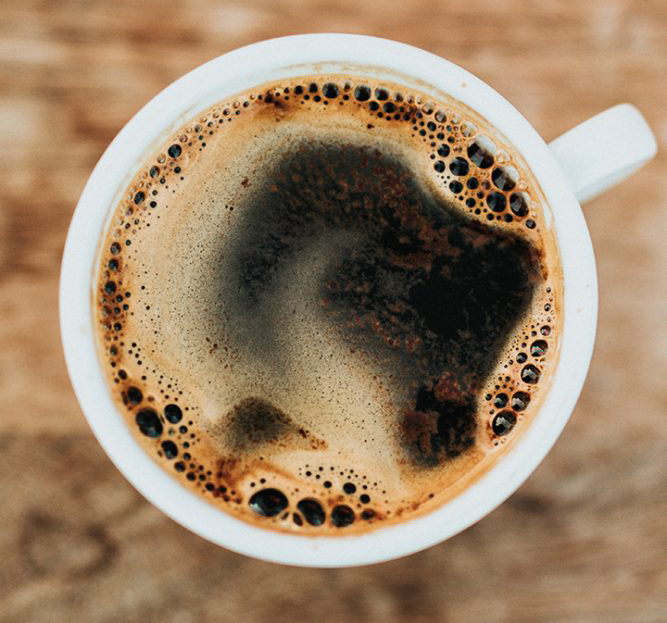
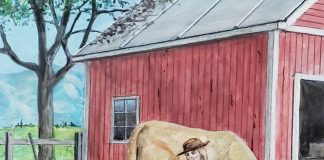
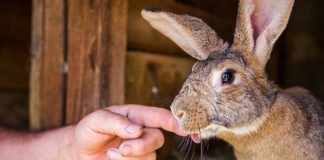




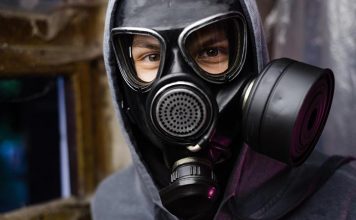
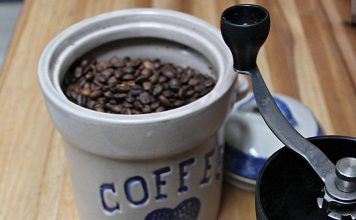
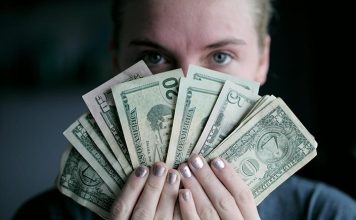
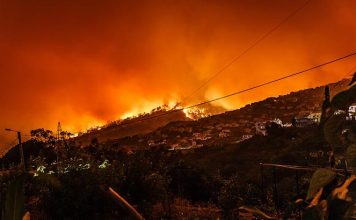


Awesome informative article! I learned a lot about a product that I honestly had taken for granted till now! Thanks my friend!